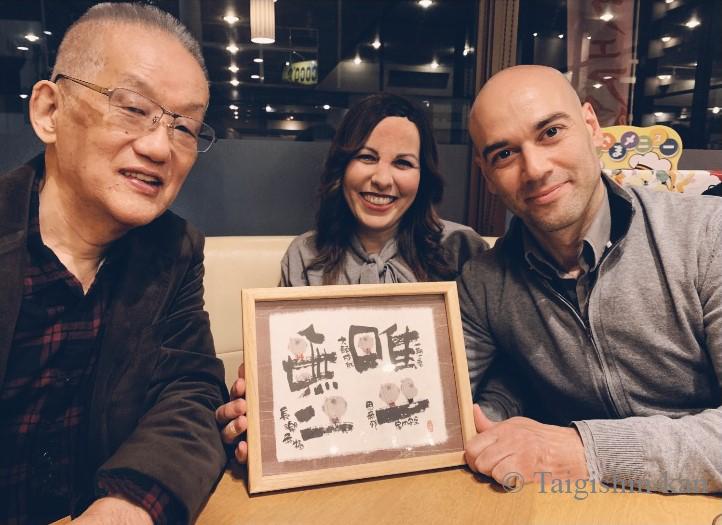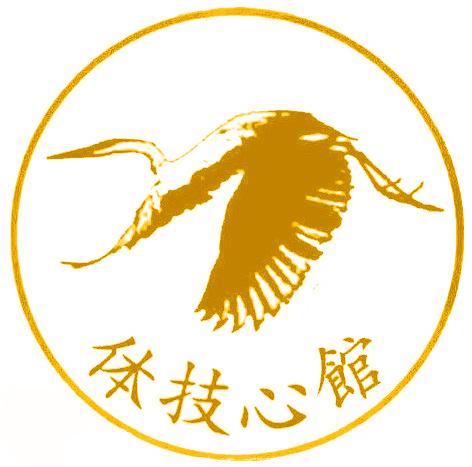<<Non è necessario fare cose speciali per gli altri ... chi ha intenzione di conoscere la verità saprà come cercarla e se possiede kokoro la troverà!>>
KOJO-RYU KARATE
il famoso stile fantasma di Okinawa
Il Kojoryu è il metodo di karate codificato probabilmente più antico esistente, ed è il cuore del sistema Koyamaryu Taigishinkan. E' risaputo che esso abbia influenzato molti altri metodi tradizionali di karate di Okinawa. Con radici che risalgono a ben 300 anni addietro nel chuan-fa cinese (vecchio Shinzanryu), a detta dei maestri attualmente attivi, esso è stato tramandato in segreto, all'interno dei soli membri della famiglia Kojo di Okinawa, fino agli anni '70 (diventando appunto Kojoryu). Benché si tratti di un antico stile di karate, esso è stato sempre considerato, dalle poche persone che lo hanno studiato realmente, un sistema di bujutsu a se stante, con caratteristiche uniche e complesse.
Il Kojoryu è un metodo estremamente combattivo che include tecniche a mano vuota e tecniche con armi; esso è ricco di atemi-waza, shime-waza e nage-waza che provengono da esperienze maturate nel tempo di svariati sistemi come Xingyi-quan, Luohan-quan, Hakutsuru-ken, Uchina-di e anche Jujutsu giapponese.
Se considerato come forma di bujutsu, incorpora molti kata provenienti da vari metodi del chuan-fa cinese e dai metodi okinawensi di Shurite, Nahate e Kuninda-di, ossia il metodo originario del villaggio di Kume dove gli antenati della famiglia Kojo risiedevano. Se considerato come stile di karate propriamente detto, esso consta di 6 kata di famiglia unici, ossia non presenti in altro stile di karate, che sono Tenkan, Kukan, Chikan, Hakko, Hakuryu e Hakkaku. I primi tre kata includono i tipici 12 kamae-te dello zodiaco cinese, che hanno particolari applicazioni tecniche per il combattimento.
PILLOLE STORICHE
CAI ZAOGONG (anche CAI ZONGHUI, ad Okinawa chiamato Kojo Uekata - 1656/1737 anche 1665/1747)
Bingfa, Caijia-quan, Poesia, Calligrafia
KOJO PECHIN SHINPO (nome cinese e data di nascita non pervenuti, probabile data di morte 1826)
Bingfa, Caijia-quan, Calligrafia
GENERAZIONI SUCCESSIVE
KOJO SHINUNJO (anche CAI SHICHANG, chiamato Nmari Bushi - 1780/1860)
Bingfa, Caijia-quan, Sakugawa Tode
KOJO SHOI (anche CAI CHANGWEI - 1816/1906)
Caijia-quan, Fujian quanfa, Bojutsu
KOJO ISEI e KOJO TATEI (1832/1891 - 1837/1917)
Caijia-quan, Fujian quanfa, Uchinadi
Inizio dell'utilizzo del nome Shinzanryu Kobujutsu
KOJO KAHO (1849/1925)
Shinzanryu, Fujian quanfa, Uchinadi
KOJO SAIKYO e KOJO SHUREN (1873/1941 - 1883/1945)
Shinzanryu, Okinawa Sumo, Ryukyu Kobudo, Nahate
 Kojo Kafu e suo figlio Shigeru
Kojo Kafu e suo figlio Shigeru
KOJO KAFU (anche Yoshitomi Kojo 1910/1996)
è stato il primo caposcuola ad utilizzare il nome Kojoryu.
Ha appreso il sistema di famiglia dal nonno, dal padre e dallo zio. Successivamente si è addestrato anche in altri metodi come Sekiguchiryu jujutsu, Jukendo e Shorinryu karate di cui divenne esperto, ricevendo istruzioni da Chomo Hanashiro e dal suo amico Choshin Chibana. Intorno agli anni '60 egli decise di iniziare ad insegnare pubblicamente, per la prima volta, aprendo un dojo a Naha insieme al figlio SHIGERU (1934/1993); così cambiò il nome del metodo di famiglia da Shinzanryu kobujutsu in Shinzanryu • Shorinryu karate, ma nel '67 cambiò nuovamente chiamandolo definitivamente Kojoryu. Ebbe circa una decina di studenti esterni alla famiglia, tra cui sono noti Shingo Hayashi e Seiji Irimaji (quest'ultimo insegnante di Takaya Yabiku).
HAYASHI SHINGO (1934) è l'erede morale di Kafu Kojo, in quanto a ultimo e più fidato studente e unica persona autorizzata da K. Kojo ad aprire un dojo in Giappone. Egli iniziò ad apprendere il Kojoryu nel 1963 a Okinawa dove lavorava come dentista, negli anni studiò altresì judo e kendo. Hayashi Sensei vive in Giappone (mainland) e proseguì lo studio del Kojoryu invitando spesso Kafu Kojo, che nel frattempo lo autorizzò ad aprire lì uno Shibu dojo. Hayashi Sensei viene chiamato "kakuri bushi" dalla comunità marziale, ossia "guerriero nascosto", grazie al suo carattere mite, sincero e assolutamente fedele agli insegnamenti del suo maestro, praticando il karate non per business, tant'è che dopo la dipartita di Kafu Kojo, decise di non insegnare più pubblicamente e adesso lo fa solo ai suoi tre uchi-deshi e sporadicamente ai pochi visitatori che gli chiedono di potergli fare visita, senza mai unirsi ad alcuna organizzazione.
YABIKU TAKAYA (1944) è stato unico uchi-deshi di Seiji Irimaji, dopo aver iniziato la pratica del Hakutsuru-ken nel 1965 sotto i Kojo per circa un anno e mezzo, grazie a Shigeru e Tatsumi Kojo (altro figlio di Kafu) che lavorava nella stessa stazione di taxi di Yabiku. Successivamente passò sotto l'addestramento di Irimaji, andando avanti per ventiquattro anni fino a quando lo stesso Irimaji lo promosse a 10° dan e successore della propria scuola chiamata Shinzanryu Koshinkan. Yabiku aveva già precedentemente ottenuto la certificazione di 7° dan Kyoshi durante un esame sotto la supervisione dello stesso Kafu Kojo. Yabiku Sensei è famoso per aver studiato anche altri stili di karate e in particolare per essere stato studente di Hohan Soken del Matsumura Seito Shorinryu; egli ha licenze d'insegnamento anche in Pangainoon/Konanryu, Chibana-ha Shorinryu e per essere un esperto del metodo della Gru Bianca che ha approfondito anche a Taiwan.
NOTE
- Si rende noto che Angelo Bonanno è stato unico studente italiano di Takaya Yabiku Sensei (fino a data odierna), ed è attualmente unico studente italiano di Shingo Hayashi Sensei
- Il Taigishinkan non ha alcun legame con le associazioni americana e australiana, né con quella filippina, che sostengono di praticare l'autentico Kojoryu Koshinkan o Matsusokan (leggi sotto), né con i loro Shibu-cho
- Si rende noto che alcune scuole sostengono di praticare il Kojoryu come trasmesso da Takaya Yabiku in maniera autentica, e che i loro insegnanti sono in possesso di licenze d'insegnamento rilasciate dallo stesso Sensei. Come verificabile dai fatti storici e da dettagli tecnici, tutti confermati al Prof. Bonanno da Yabiku Sensei durante i suoi viaggi ad Okinawa, e nella corrispondenza in possesso dello stesso Prof. Bonanno, nonché come riportato sul suo manuale tecnico pubblicato nel 2020 (Shinzanryu Karate - Introduzione al più antico karate di Ryukyu, Ed. Youcanprint), queste scuole e relativi insegnanti praticano Koshinryu e non Kojoryu. Il Koshinryu, infatti, è la linea di karate fondata da Seiji Irimaji quando decise di staccarsi dal suo insegnante Kafu Kojo per aprire la propria scuola chiamata Koshinryu Koshinkan, e modificò i kata originali ampliando il syllabus con forme di altri stili e forme inventate da lui stesso. E' risaputo che Kafu Kojo non vedeva di buon occhio questa decisione di Irimaji Sensei. Irimaji Sensei dopo aver già lasciato in mano il suo Koshinkan a Yabiku Sensei, a causa di motivi di lavoro prima e di salute poi, decise solo nel 2013 di abbandonare la trasmissione del Koshinryu spronando Yabiku a trasmettere l'autentico Kojoryu solo a persone fidate, chiamandolo però Shinzanryu (ossia col nome antico).
Per cui il Koshinryu non è l'autentico Kojoryu, i suoi kata non sono quelli originali del metodo di famiglia, e chiunque sostenga di praticare lo stile originario di famiglia Kojo può essere ritenuto un millantatore. Il Kojoryu autentico per come trasmesso da Kafu Kojo a Seiji Irimaji e da questi a Takaya Yabiku (prima della modifica) è conosciuto da sole due persone: Ron Goninan, studente di vecchia data di T. Yabiku, e Angelo Bonanno.
 Hayashi Sensei and the only Kojoryu Shibu authorized by Kafu Kojo
Hayashi Sensei and the only Kojoryu Shibu authorized by Kafu Kojo


